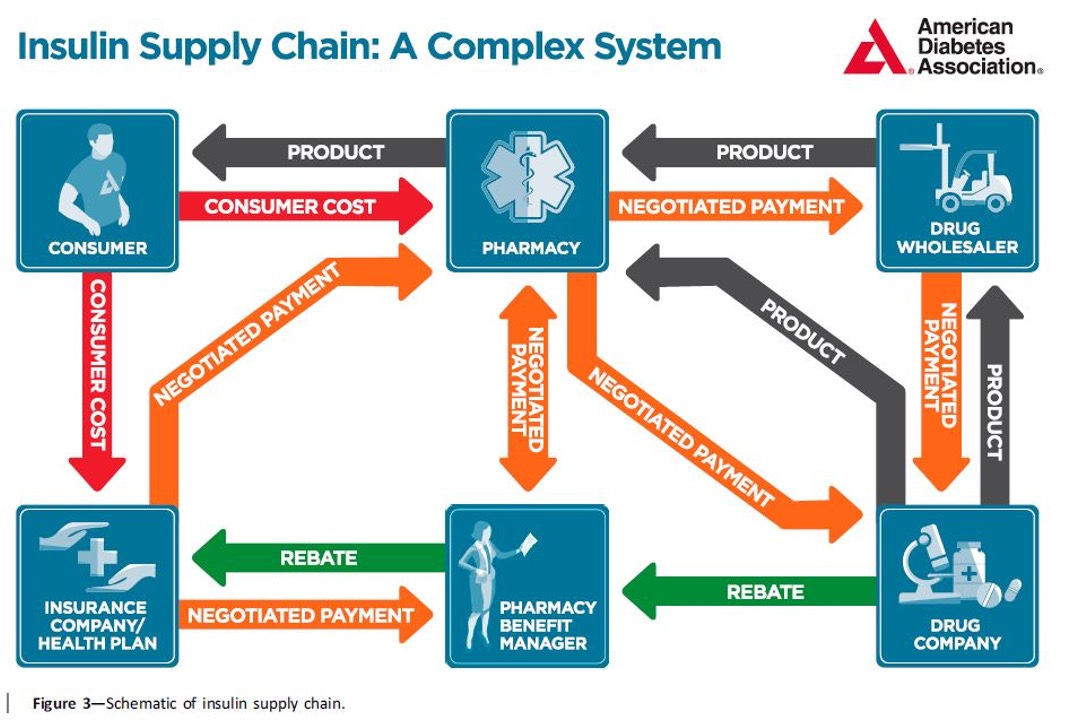Disentangling Drug Prices: Sorting Out the Supply Chain (Part I)
Why pharma is like a layer-cake, except not delicious.
1. Crazy prices need crazy new ideas
Amazon Pharmacy and Mark Cuban, the Shark Tank entrepreneur, have been making waves in pharmaceutical markets lately, with new ventures aimed at deeply undercutting prevailing drug prices and disrupting the traditional supply chains. I personally investigated this as part of the lockdown after-party currently being thrown by strep infection. As a party favor, I paid $12.85 at my local pharmacy, with my insurance, to kick strep out of my house (and my son). However, a quick Google of GoodRx.com (sadly, after purchase) for the same amoxicillin, without insurance, gives me a price of $10.14 at my pharmacy, $7.35 at Walgreens, and $16.90 at Walmart. Meanwhile, the two industry-disruptors named above promise it to me at $3.70 and $5.10 in tablet form. Why are all these prices so different??
In this series, we’ll learn why and evaluate the potential for revolutionary disruption from these new pharmaceutical ventures.
Let’s start more broadly with a familiar product - my favorite, apples. A beautiful upstate New York apple is grown by a farmer. How does it get to your mouth? Consider the apple supply chain:

If you’re lucky, you could go to the orchard yourself. The hungry consumer gets a fresh apple, and the farmer pockets the payment directly. If you opt for the grocery store route, that apple either comes directly from the farmer or maybe through a distribution center in between. There are one, maybe two intermediaries. When the apple changes hands, the full payment for the good flows directly in the opposite direction.
2. Pharmaceutical supply chain: Like a layer-cake, except not delicious
Now let’s introduce the pharmaceutical supply chain. The first thing to note is that, even when compared to the apple supply flow with the most middlemen, the count of players in the pharmaceutical flow increases by two (and has increased by four players compared to farm-direct). Besides the consumer, the producer (drug companies), the retailer (pharmacy), and the distributor (drug wholesaler), there is the insurance company and entities called pharmacy benefit managers. More on these later in the series but notice that neither of these two new entities actually handle the pharmaceutical products- they just introduce new layers of payment complexity. And while more layers in a cake are delicious, more layers in a distribution network means more frosting- er profit markups- per layer.
3. Farm fresh pharma?
Ironically, one of the new players complicating costs, pharmacy benefit managers (or PBMs), was created to reduce costs. In essence, PBMs try to act as price negotiators for insurance plans. Notice that the number of payments flying around has exploded: PBMs and insurance companies negotiate payments with the pharmacies and with each other and a new kind of payment has emerged, the rebate. Just like your Best Buy TV, a rebate is a pre-negotiated discount on a product, but only after purchase. And just like you and your TV, the PBM and insurer now have to remember to file the paperwork, or they lose the rebate.
This mess is what Amazon Pharmacy and the Mark Cuban Cost Plus Drug Company are trying to sidestep. Both cut out the PBM middleman and instead keep prices low through scale and low markups. Cost Plus even claims to be building their own drug manufacturing facility in Dallas- farm fresh pharma coming soon?
In the next few lessons, we’ll learn about the role of PBMs, insurers, and some ways large retailers might be changing the landscape for the cheaper. As always, keep me updated on what you’re up to or reach out to chat with me about these issues!
Best,
TMD



